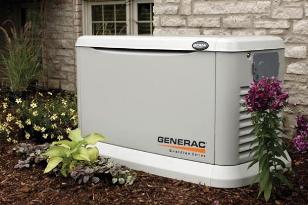
Backup Generators and Transfer Switches



Remembering the Great Ice Storm of 1998
Changing temperatures over several days created multiple freezing rain storms that affected regions in both the United States and Canada.
Heavy ice build up on electrical poles, trees, transmission lines gave way under the heavy weight.
Vast numbers of homes lost power, some for several weeks as electrical crews tried to restore power, clear fallen trees, and electrical structures.
Emergency crews where swapped, roads where blocked, no electricity meant no heating to homes in the middle of winter.
You simply could not buy an electrical generator, every store was sold out. Generators where being moved around to help people. Train engines in some locations where brought in to generate power.
I got lucky, I only lost power for about an hour to an hour an a half, but I lived in a newer part of the city with underground wiring, other areas did not do as well, and rural areas got hit the worse.
I wonder how many of those that where affected had backup generators back then and how many have them now.
The great ice storm may not happen again but then again…
Backing up your home electrical system with a backup electrical Generator
Things to consider…
- What do you need to back up electrically? This will help determine the size of generator required.
- What kind of transfer between the utility and the generator system – manual / automated?
- Plug in or hard wired?
- Fuel system that runs the generator?

Generators come in a variety of types, from portable to permanent, different fuel types and output sizes.
The most critical electrical items in the home in my view are…
- Furnace – Heating in winter climates.
- Any medical devices – should you have any.
- Refrigerator / Freezer
- Sump pump and water pump – usually in rural areas.
- Basic lighting.
- Microwave if the outage is lengthy.
You will have to do a demand load calculation on your home or on the circuits that will be running on the backup generator to determine the size of generator required.
If you can afford it you can get a whole home backup generator but will cost more because you need higher power output. Otherwise you get one that can power the absolute essentials.
The fuel type if portable will likely be gas, but if more permanent it can be propane in rural areas or natural gas in urban areas, may be even be able to get ones that run on heating oil.
Now I included this article mainly to be able to overstress the importance of a transfer switch. A transfer switch is a device that switches the power feed to the desired circuits from either the utility feed or the backup generator. If installed correctly it makes it impossible for your generator to feed power back to the utility electrical grid.
If you incorrectly install this or not at all, you can feed the electricity generated from your backup generator back to the utility electrical grid, you could also be helping to feed power back though your neighborhood, is that a bad thing? Well yes it is – first no home generator can generate that much power, 2nd the electrical workers that are working to restore power believe the lines are dead while working on them. Just as the power supply is down stepped to it gets to your residence, coming from your generator it will do the exact opposite back feeding through the utilities transformers. So the lineman working to restore power could get hit with 7,200 volts or more and killing him or her. You could be held criminally responsible for that person’s injuries or death and be charged as such. The prison where you will now be spending a great deal of time at would have had there backup generator and transfer switches installed properly.
The examples in the you tube videos above are manual transfer switches.
My preference is with a permanent hard wired system is have a automated transfer switch that will auto start the generator and auto transfer power, a manual switch does not help you if you are not at home at the time of the power outage or if you have medical / mobility issues that make it difficult to easily get to the service panel / transfer switch location. But it depends if you tend to be away for lengthy time periods, have any medical or mobility issues, and so on; so take that all into consideration on deciding which type of system.
SPECIAL NOTE:.
NEC [applicable in the United States not sure if in Canadian code] electrical code that first appeared in the 2008 NEC 702.5(B)(2) – if you install an automatic transfer switch, the generator must be able to power the entire calculated load of the panel it is feeding OR you must install automatic load shedding equipment. You can still manually load shed ONLY IF you have a manual transfer switch.
WHILE EXTREME CARE HAS BEEN IMPLEMENTED IN THE PREPARATION OF THIS SELF-HELP DOCUMENT, THE AUTHOR AND/OR PROVIDERS OF THIS DOCUMENT ASSUMES NO RESPONSIBILITY FOR ERRORS OR OMISSIONS, NOR IS ANY LIABILITY ASSUMED FROM THE USE OF THE INFORMATION, CONTAINED IN THIS DOCUMENT, BY THE AUTHOR and / OR PROVIDER.
By: Donald Kerr